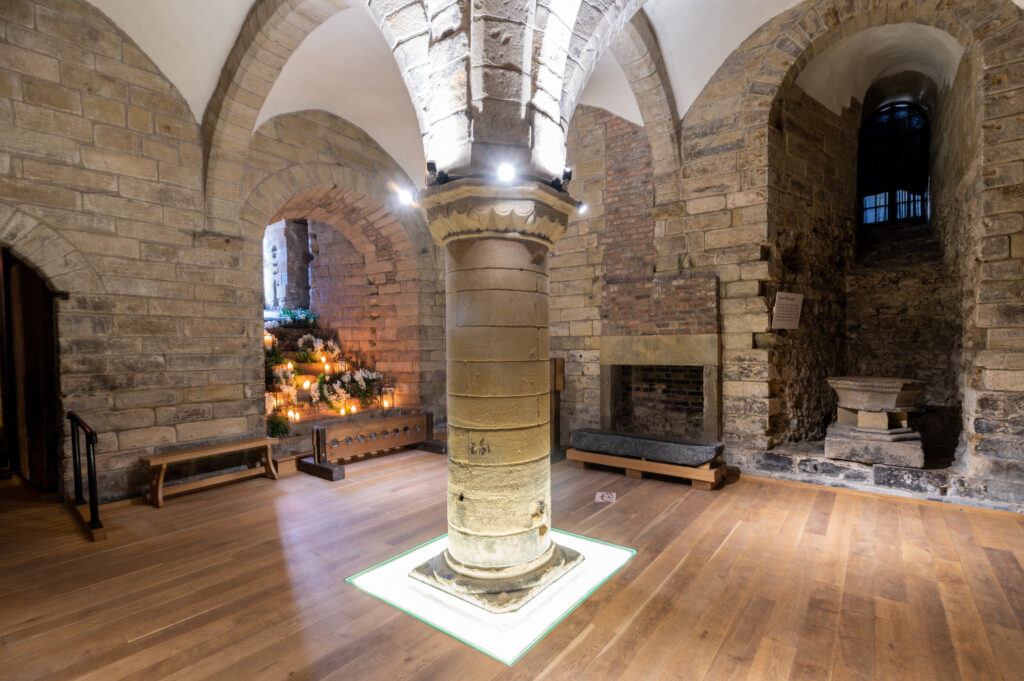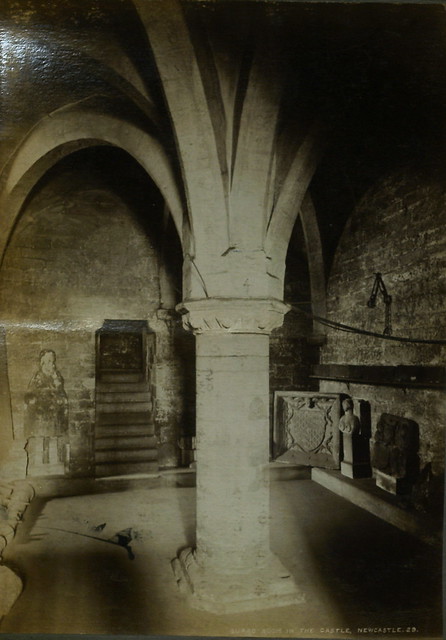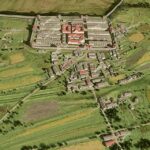The cellar in Newcastle’s castle has also been known as the Garrison room. It was so called by a local antiquarian called John Collingwood Bruce. In those days, antiquarians were the people who, before historians and archaeologists existed, would gather together items, artifacts and stories from history and write books about them.

John Collingwood Bruce theorised that the cellar was the Garrison room where the soldiers would sleep and live while they were stationed at the castle. Soldiers, in his mind, weren’t high status individuals.
During the Middle Ages the cellar was where the food and drink would have been kept. The contents of the room would be used to maintain the troops and anyone else who lived and worked within the castle.
Even today it’s quite a cold room – the thick walls keep the cool air in the room so it was great for storing and preserving food, beer and wine. It is also situated quite close to the supply rooms of the castle. The modern-day accessibility entrance to the castle, built on the same site as the medieval access to the cellar, lines up perfectly with the medieval quayside too. That meant goods coming in along the river would be easily transferred to the castle cellar. Such a clever supply system.
Inside the central pillar there’s a hole which would have housed a lead pipe to supply the cellar with fresh water – part of the castle’s plumbing system.
Tudor times and a change of use

When we think of lower rooms in castles, we often think of medieval dungeons. After the Middle Ages, the castle ceased to be used as a military site and fell into disrepair. During the Tudor period it was adopted as a prison. There are iron loops clearly displayed in the walls of the cellar, to which a chain would have been attached. Prisoners would have been brought to the cellar and chained to the walls. They’d be left here until their trial.
As we already mentioned, the cellar is a very cold room. Add in damp and the famous cold winds of Newcastle and it would have been a very uncomfortable room in which to be kept!
We have 18th century writings from civil servants who assessed the prisons of the British Isles that say this was one of the worst prisons in England due to the conditions within the prison and the inhumane treatment of the prisoners it housed.
The modern-day visitor aspect of the castle has leaned into the idea of the prison, displaying stocks and pillories – great fun to bring the kids down and allow them to put you in the pillories!
During World War II
The cellar of the castle was used as an air raid shelter during World War II. The castle walls were built to withstand battle and remain a strong defence against attack. The cellar was perfect as an air raid shelter to defend against fire from the Luftwaffe. You can imagine, as the sirens went off, local people would go to the castle and sleep there overnight until the ‘all clear’ signal came.
I hope you’ve enjoyed learning how Newcastle’s castle has changed its use to look after the people of Newcastle over the many years since it was built.



